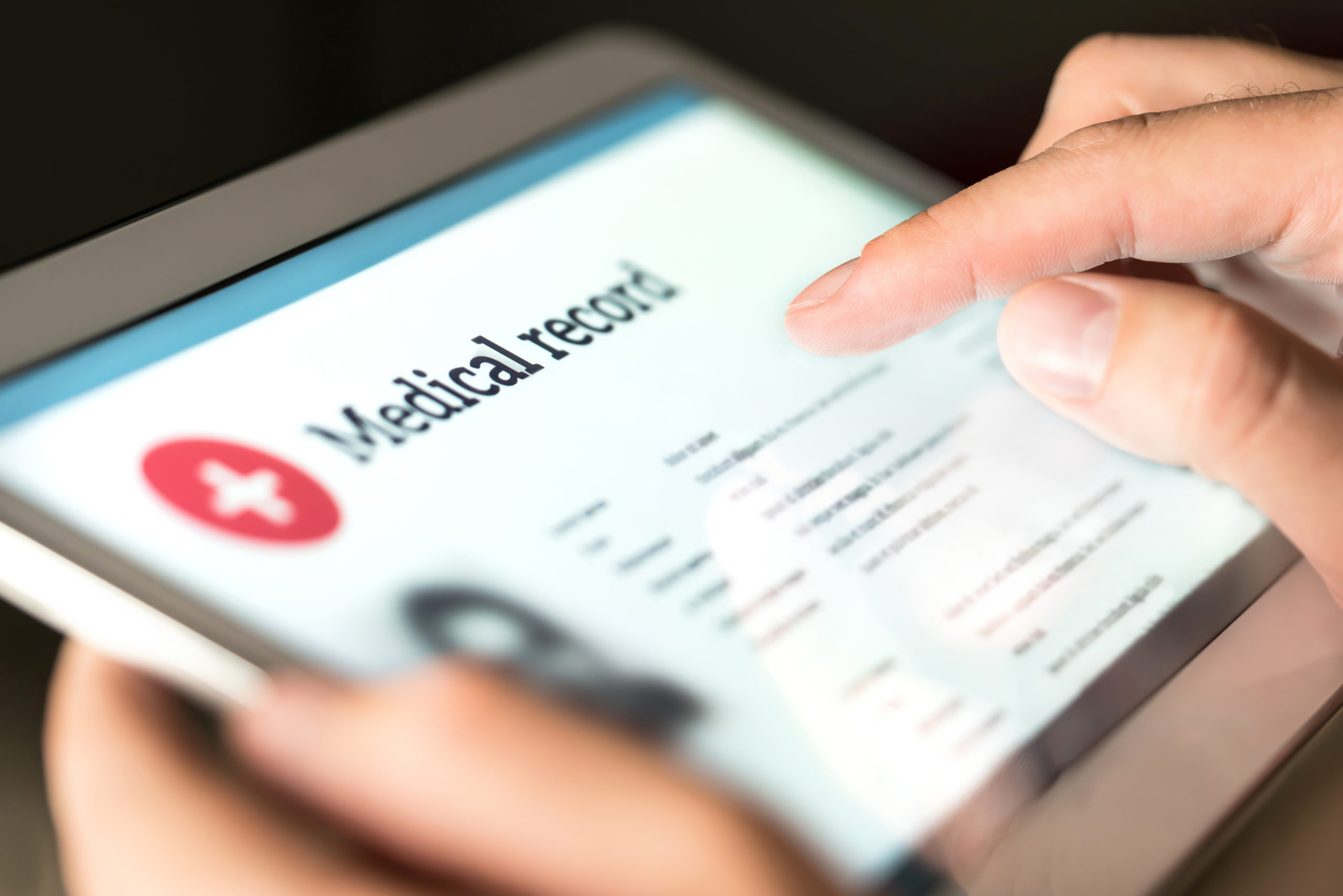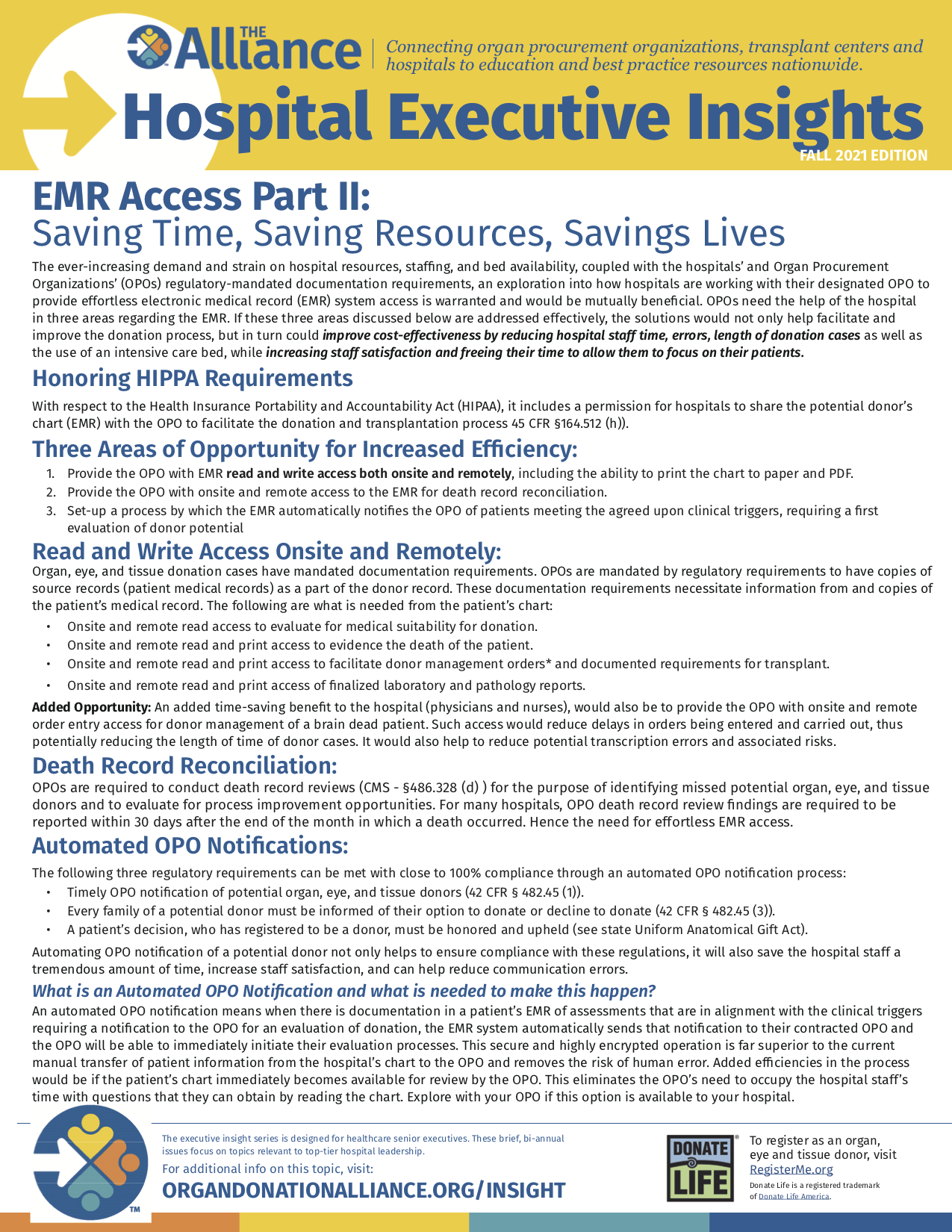The ever-increasing demand and strain on hospital resources, staffing, and bed availability, coupled with the hospitals’ and Organ Procurement Organizations’ (OPOs) regulatory-mandated documentation requirements, an exploration into how hospitals are working with their designated OPO to provide effortless electronic medical record (EMR) system access is warranted and would be mutually beneficial.
OPOs need the help of the hospital in three areas regarding the EMR. If these three areas discussed below are addressed effectively, the solutions would not only help facilitate and improve the donation process, but in turn could improve cost-effectiveness by reducing hospital staff time, errors, length of donation cases as well as the use of an intensive care bed, while increasing staff satisfaction and freeing their time to allow them to focus on their patients.
Honoring HIPAA Requirements
With respect to the Health Insurance Portability and Accountability Act (HIPAA), it includes a permission for hospitals to share the potential donor’s chart (EMR) with the OPO to facilitate the donation and transplantation process 45 CFR §164.512 (h)) [1].
Three Areas of Opportunity for Increased Efficiency
- Provide the OPO with EMR read and write access both onsite and remotely, including the ability to print the chart to paper and PDF.
- Provide the OPO with onsite and remote access to the EMR for death record reconciliation.
- Set-up a process by which the EMR automatically notifies the OPO of patients meeting the agreed upon clinical triggers, requiring a first evaluation of donor potential.
Read and Write Access On-Site and Remotely
Organ, eye, and tissue donation cases have mandated documentation requirements. OPOs are mandated by regulatory requirements to have copies of source records (patient medical records) as a part of the donor record. These documentation requirements necessitate information from and copies of the patient’s medical record. The following are what is needed from the patient’s chart:
- Onsite and remote read access to evaluate for medical suitability for donation.
- Onsite and remote read and print access to evidence the death of the patient.
- Onsite and remote read and print access to facilitate donor management orders* and documented requirements for transplant.
- Onsite and remote read and print access of finalized laboratory and pathology reports.
**Added Advantage: An added time-saving benefit to the hospital (physicians and nurses), would also be to provide the OPO with onsite and remote order entry access for donor management of a brain dead patient. Such access would reduce delays in orders being entered and carried out, thus potentially reducing the length of time of donor cases. It would also help to reduce potential transcription errors and associated risks.
Death Record Reconciliation
OPOs are required to conduct death record reviews (CMS – §486.328 (d) [2]) for the purpose of identifying missed potential organ, eye, and tissue donors and to evaluate for process improvement opportunities. For many hospitals, OPO death record review findings are required to be reported within 30 days after the end of the month in which a death occurred. Hence the need for effortless EMR access.
Meet Three Regulatory Requirements through Automated OPO Notifications
The following three regulatory requirements can be met with close to 100% compliance through an automated OPO notification process:
- Timely OPO notification of potential organ, eye, and tissue donors (42 CFR § 482.45(1)).
- Every family of a potential donor must be informed of their option to donate or decline to donate (42 CFR § 482.45(3)).
- A patient’s decision, who has registered to be a donor, must be honored and upheld (see state Uniform Anatomical Gift Act).
Automating OPO notification of a potential donor not only helps to ensure compliance with these regulations, it will also save the hospital staff a tremendous amount of time, increase staff satisfaction, and can help reduce communication errors.
What is an automated OPO notification and what is needed to make this happen?
An automated OPO notification means when there is documentation in a patient’s EMR of assessments that are in alignment with the clinical triggers requiring a notification to the OPO for an evaluation of donation, the EMR system automatically sends that notification to their contracted OPO and the OPO will be able to immediately initiate their evaluation processes. This secure and highly encrypted operation is far superior to the current manual transfer of patient information from the hospital’s chart to the OPO and removes the risk of human error. Added efficiencies in the process would be if the patient’s chart immediately becomes available for review by the OPO. This eliminates the OPO’s need to occupy the hospital staff’s time with questions that they can obtain by reading the chart. Explore with your OPO if this option is available to your hospital.
If you see an opportunity to further enhance collaboration to support donation and save more lives through transplantation, contact your OPO.








